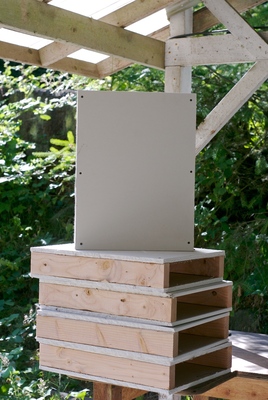Test Parameters
Ammo
Results
Conclusion
Targets

In the interests of ensuring domestic harmony and minimizing police involvment, simulated walls were used instead of the interior of my house. I built several wall sections simulating the space between studs to test the worst-case scenario of a straight-on wall shot that misses the heavier supporting 2x4s. Building standards call for studs to be separated by 16 inches center-to-center, but these sections are 16 inches outside-to-outside to help them hold together. Hopefully this is close enough to the real thing to realistically simulate the stiffness of inter-stud drywall. 5/8 inch drywall was used in order to comply with all relevant building codes.

The truck was removed before shooting.
The first wall was placed five feet from the firing line and subsequent walls were spaced ten feet apart, which should roughly simulate indoor distances. Separation between the walls is important if rounds flatten out or break up, since this gives air resistance a chance to work against suddenly non-aerodynamic shapes. Spacing the walls so close together and shooting straight on provides a realistic yet worst-case scenario for interior wall penetration.
Guns

A gun shot.
Rifle ammo was fired from a Mini-14 Tactical, whose 16.25-inch 1:9 twist barrel should produce ballistics representative of most common .223 semi-automatic carbines.
The shotgun used was the canonical Remington 870, specifically a Marine Magnum featuring an 18 inch barrel with a cylinder choke.
Speaking of canonical, a 1911 provided the platform for .45 ACP. It's a custom build belonging to, and built by, the photographer.
9mm ammo was put through an FM Detective, a Hi-Power variant with a shortened slide. Its barrel is about 3.6 inches long, which makes it comparable to most concealed-carry-oriented 9mm handguns. As it turned out, barrel length with handguns probably wouldn't make much difference.

Sig nificant part of the testing.
Finally, a Sig P230 provided the platform for testing .380 ACP.
All Photos © 2009 B. Toombs
email: hidi.projects at gmail.com